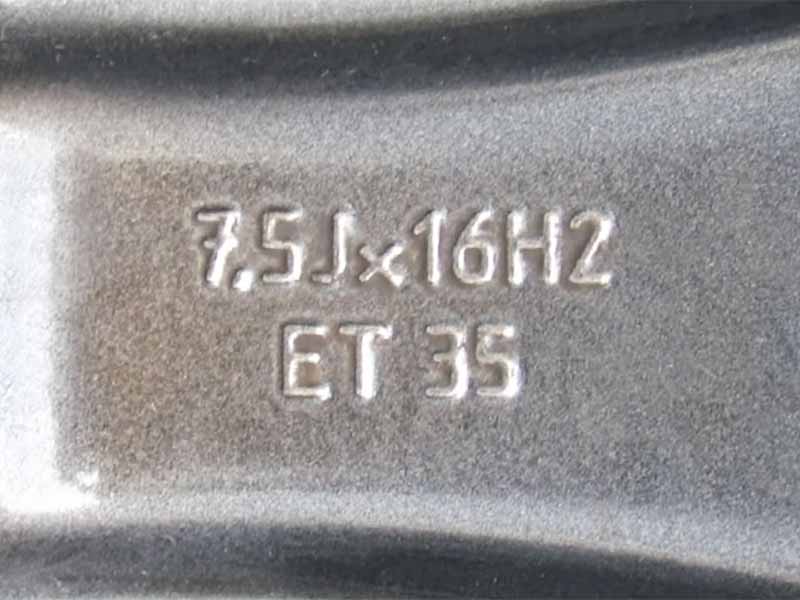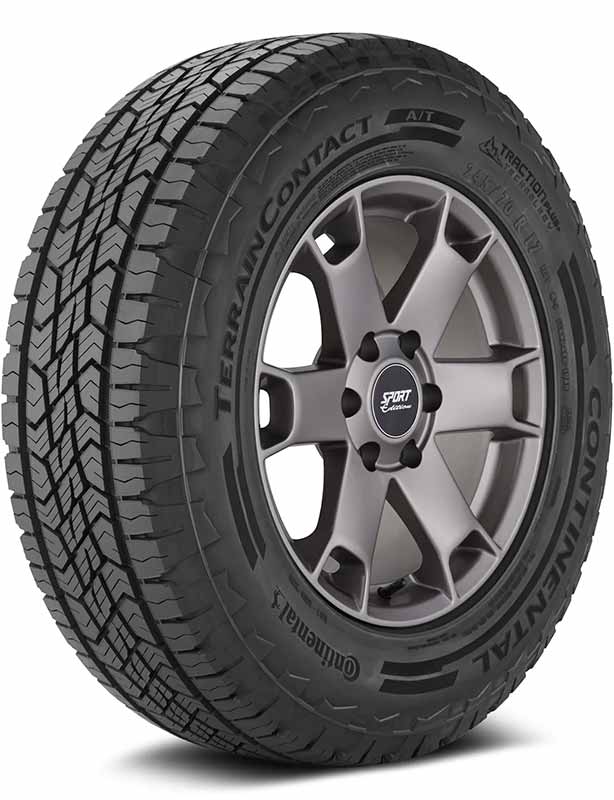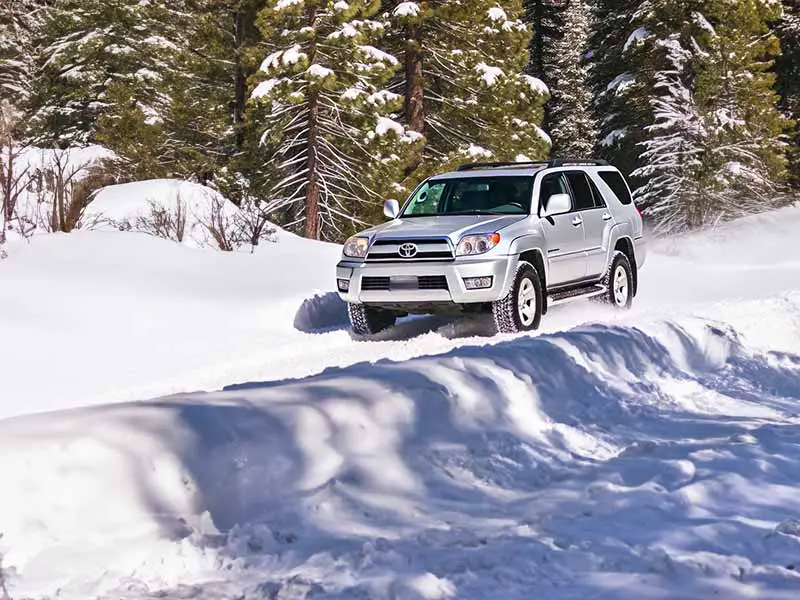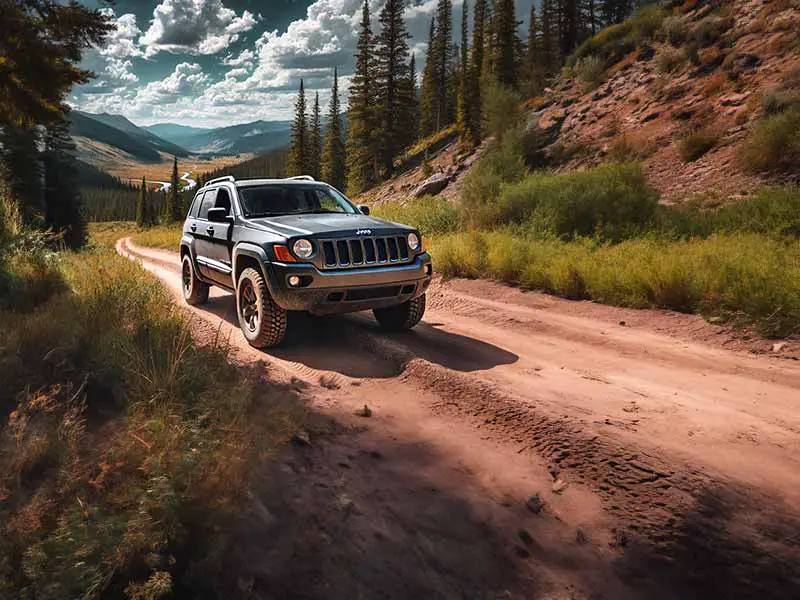Have you ever looked at a wheel and wondered what all those numbers and letters mean? Understanding the specifics of your wheel size is not just about ensuring a smooth ride; it’s about safety, performance, and getting the most out of your vehicle.
How To Read Rim Size
Rim size is a comprehensive measure involving several key dimensions and characteristics of a wheel, essential for tire selection and vehicle performance:
- Width (e.g., 7.5 in “7.5Jx16H2 ET 35”): The distance between the inner and outer edges of the rim.
- Diameter (e.g., 16 in “7.5Jx16H2 ET 35”): The size of the rim measured from one edge to the opposite edge.
- Tire Bead Profile (e.g., J in “7.5Jx16H2 ET 35”): Indicates the shape of the rim’s hump, impacting tire fitting.
- Hump Configuration (e.g., H2 in “7.5Jx16H2 ET 35”): Details the specific type of hump shape on the rim.
- Offset (e.g., ET 35 in “7.5Jx16H2 ET 35”): The distance from the centerline of the wheel to the mounting surface.
- Bolt Pattern: The arrangement of bolt holes on the wheel, crucial for ensuring the wheel fits securely onto the vehicle.
In this article, we’ll decode the mysteries behind wheel sizing like “7.5Jx16H2 ET 35”, delving into rim width, diameter, hump shape designation, and offset. We’ll also explore bolt patterns, a key factor in wheel compatibility, to help you make informed decisions about your tires and wheels.
A Breakdown of 7.5Jx16H2 ET 35
So, you’ve come across a rim size labeled “7.5Jx16H2 ET 35” and wondering what it all means? Let’s unpack this in a way that makes sense, without getting lost in jargon.
7.5 – Rim Width
- What It Means: The “7.5” in our rim size refers to the width of the rim in inches.
- Why It Matters:
- Tire Fitment: This width determines the range of tire widths that can be safely mounted.
- Performance: Wider rims can provide better handling, but may also affect the ride quality.
J – Tire Bead Profiles
- Understanding ‘J’: The ‘J’ is a shape designation for the rim’s hump – the area where the tire bead sits.
- Its Role:
- Safety and Fit: This shape impacts how the tire sits on the rim and is crucial for a secure fit and safe driving.
16 – Rim Diameter
- Diameter Details: The number “16” here signifies the diameter of the rim in inches – a crucial measure for tire compatibility.
- Choosing Tires: Ensuring the tire diameter matches the rim’s diameter is key to avoid issues with installation and vehicle performance.
H2 – Hump Configuration
- What ‘H2’ Indicates: “H2” signifies a specific type of hump configuration designed for better tire bead retention.
- Importance for Tire Pressure: This feature helps maintain proper tire pressure and contributes to the tire’s overall stability.
ET 35 – Offset
- Offset Explained: ‘ET 35’ stands for an offset of 35 millimeters, which is the distance from the wheel’s mounting surface to the rim’s true centerline.
- Impact on Vehicle: The offset affects how far the wheels stick out from the car, influencing handling and the vehicle’s overall stance.
Rim Width Compatible Tire Size Calculator
Rim Width
- Definition: Rim width is the distance between the inner and outer faces of the rim.
- Measured In Inches: Typically, rim width is measured in inches. For example, a rim labeled as “7.5” is 7.5 inches wide.
The Role of Rim Width in Tire Selection
- Tire Compatibility: The width of your rim determines the size of the tire that can be safely mounted.
- Not Too Narrow or Wide: It’s crucial to ensure that the tire width is not too far off from the rim width for a proper fit.
Impact on Vehicle Performance
- Handling and Stability: A wider rim can increase the vehicle’s stability and improve handling, especially during cornering.
- Ride Comfort: Conversely, a narrower rim might offer a smoother ride by allowing for more tire sidewall flex.
Considerations When Choosing Rim Width
- Vehicle Specifications: Always refer to your vehicle manufacturer’s recommendations for rim width.
- Driving Needs and Style:
- Performance Driving: If you prioritize handling, wider rims might be the way to go.
- Comfort Driving: For a more comfortable ride, sticking to the manufacturer’s recommended width is usually best.
Common Wheel Widths
- 5.0 inches: Commonly found in smaller cars or compact vehicles.
- 6.0 inches: Typically seen on smaller sedans and compact cars.
- 6.5 inches: A standard size for many compact and some mid-sized vehicles.
- 7.0 inches: Frequently used in mid-sized cars.
- 7.5 inches: Common in mid-sized to larger sedans and some smaller SUVs.
- 8.0 inches: Often seen on larger sedans, SUVs, and some trucks.
- 8.5 inches: A popular size for SUVs and light trucks.
- 9.0 inches: Typically used for larger SUVs and trucks.
- 9.5 inches and above: Found in larger trucks, performance vehicles, and some specialty cars.
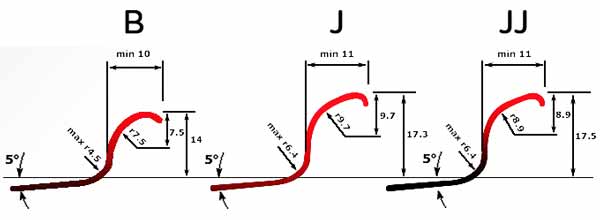
Tire Bead Profile
- Definition: The hump shape designation, such as the ‘J’ in “7.5Jx16H2 ET 35”, refers to the profile of the rim where the tire bead rests.
- Common Designations: The most typical hump shapes are ‘J’, ‘JJ’, ‘B’, ‘P’, and ‘D’, each with its own specific contour.
Role of Tire Bead Profiles in Tire Fitting
- Seating the Tire: The tire bead profile helps in securing the tire bead to the rim, ensuring a proper fit.
- Influence on Safety: A correctly matched tire bead profile and tire bead prevent the tire from dismounting during driving, especially in high-pressure situations like cornering or sudden maneuvers.
How Tire Bead Profiles Affects Tire Performance
- Air Pressure Maintenance: The right tire bead profile ensures the tire maintains proper air pressure, crucial for optimal tire performance and longevity.
- Handling Characteristics: It subtly influences how the tire responds to road conditions, affecting handling and ride quality.
Choosing the Right Tire Bead Profile
- Vehicle Manufacturer’s Specifications: Always refer to your vehicle’s manual or manufacturer’s recommendations when considering rim changes.
- Compatibility with Tire Type: Ensure the hump shape of your rim is compatible with the type of tire you are using, especially for performance or specialized tires.

Hump Configuration
- Specifics of the Hump Shape: While the hump shape designation (like ‘J’) tells you about the general profile, the hump configuration provides more specific details.
- Example – ‘H2’ in ‘7.5Jx16H2 ET 35’: This refers to a particular type of hump shape designed for enhanced tire bead retention.
Role of Hump Configuration
- Tire Bead Seating: It’s crucial for properly seating the tire bead on the rim. A well-matched hump configuration ensures that the tire bead sits securely, reducing the risk of bead unseating.
- Air Pressure Maintenance: Correct hump configuration aids in maintaining consistent air pressure, which is vital for tire longevity and performance.
Impact on Tire Safety and Performance
- Enhanced Safety: A properly configured hump helps keep the tire correctly mounted, especially important during challenging driving conditions like cornering or abrupt maneuvers.
- Optimized Performance: It contributes to the overall handling characteristics of the tire, influencing factors such as ride comfort and responsiveness.
Wheel Offset
- Definition: Offset is the distance between the centerline of the wheel and the plane of the hub-mounting surface of the wheel.
- Measured in Millimeters: It’s typically measured in millimeters and can be positive, negative, or zero.
Types of Wheel Offset
- Positive Offset: The mounting surface is closer to the front (street-facing side) of the wheel. Common in most modern front-wheel-drive cars.
- Negative Offset: The mounting surface is closer to the back (brake-facing side) of the wheel. Often seen in older cars and some off-road vehicles.
- Zero Offset: The mounting surface is even with the centerline of the wheel.
Importance of Correct Offset
- Vehicle Handling: The right offset ensures that the wheel and tire assembly is centered in the wheel well, affecting the handling and steering of your vehicle.
- Clearance: Incorrect offset can lead to problems with tire clearance, either against the vehicle’s body or suspension components.
- Stress on Components: An offset that’s too far off can put additional stress on wheel bearings and suspension parts.
How to Find Your Wheel Offset
- Check Existing Wheels: It’s often stamped on the back of the wheel (e.g., “ET 35” means 35mm positive offset).
- Consult Manufacturer’s Specifications: Vehicle manuals or manufacturer websites often list recommended offset ranges.
Bolt Patterns
Now that we’ve decoded the rim size, let’s shift gears to another critical aspect of wheel sizing: bolt patterns. It’s not just about the holes in the wheel; it’s about how they align with your car.
Definition of Bolt Pattern
- Basics: A bolt pattern, sometimes called PCD (Pitch Circle Diameter), refers to the number of bolt holes in the wheel and how they are spaced.
- Key to Wheel Fitment: It’s essential for ensuring the wheel fits securely onto your vehicle’s hub.
Measuring Bolt Patterns
- Counting Bolt Holes: The first step is simple – count the number of bolt holes in the wheel. Common patterns are 4, 5, 6, or 8 bolts.
- Measuring Bolt Circle Diameter:
- 4, 6, or 8 Bolt Wheels: Measure from the center of one bolt hole to the center of the hole directly opposite.
- 5 Bolt Wheels: Measure from the back of one hole to the center of the second hole.
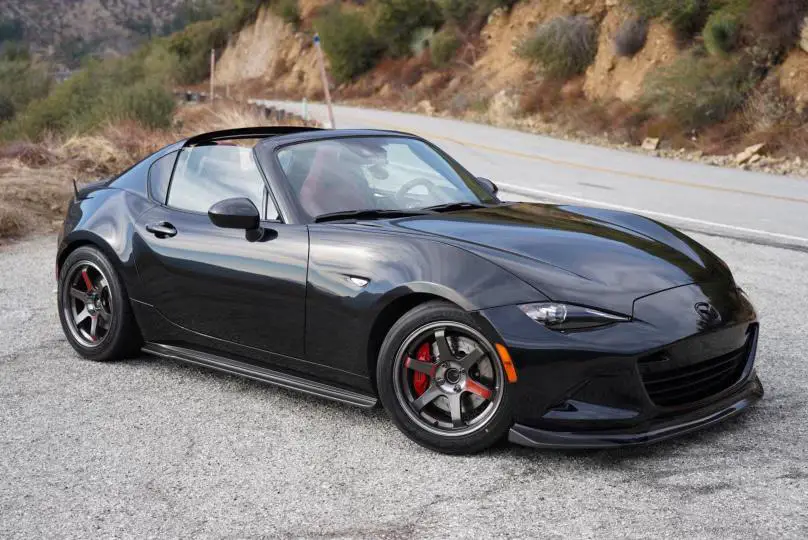
Practical Applications and Considerations
Armed with knowledge about rim sizes and bolt patterns, let’s explore how to apply this when selecting tires or considering a change in your rims.
Selecting the Right Tires
- Matching Tires to Rim Size: Use the rim size information, like our example “7.5Jx16H2 ET 35”, to find tires that fit perfectly.
- Width and Diameter Compatibility: Ensure the tire width and diameter align with your rim’s width and diameter.
- Checking Hump Shape and Offset: The tire bead must correspond to the rim’s hump shape, and the tire profile should accommodate the rim’s offset.
Upgrading or Changing Rims
- Considering a Change? Changing your vehicle’s rims isn’t just about aesthetics; it can affect performance and handling.
- Factors to Keep in Mind:
- Size Matters: Upgrading to larger rims (increasing diameter) can enhance handling but might affect ride comfort.
- Width and Offset: Wider rims could mean better grip but ensure they don’t rub against your vehicle’s body.
- Bolt Pattern Compatibility: Always choose a rim with a bolt pattern that matches your vehicle.
- Consult a Professional: When in doubt, it’s wise to consult with a tire or automotive professional to ensure compatibility.
Resources
Below are some links you may find helpful when learning about tires:
Final Thoughts
The width, diameter, hump shape, and offset of your wheel all play a crucial role in how your vehicle handles. When it comes to bolt patterns, compatibility is key for a secure fit and smooth ride.
Always consult your vehicle’s manual or a professional for advice on tire and wheel specifications to ensure you’re making the right choices for your vehicle.
Good luck and happy motoring.
